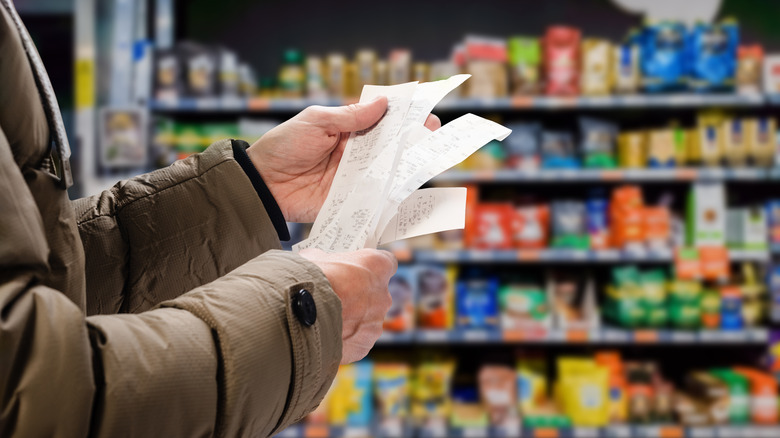Food Price Increases Are About To Get Even Worse, USDA Predicts
Your grocery store bills might have been higher than usual lately — and the U.S. Department of Agriculture predicts that food costs are only going to increase again this year. The agency's Economic Research Service released its Food Price Outlook for 2022 and found that, between February 2021 and 2022, food prices in the U.S. jumped 7.9%, and are continuing to rise.
Price hikes are hitting certain food groups harder than others, according to the report. Proportionally higher prices on popular proteins like beef, bacon, and eggs are causing restaurant prices to increase, and the much-discussed supply chain shortages explain why fresh produce might get more expensive this year, too.
Let's break down the numbers. The agency predicts that, in 2022, grocery prices will likely rise about 3–4%, and the cost of eating out could jump 5.5–6.5%, higher than historical annual increases and faster than the general rate of inflation. If there's any silver lining here, it's that these percentages are smaller than the food price increases were last year, the report says, so perhaps the worst is behind us. But snack-store sticker shock likely won't stop spooking us in the coming months.
Why this is happening and who it affects the most
There are several reasons why food prices are expected to continue to go up in 2022. The Russian invasion of Ukraine is already having a serious affect on the U.S. food supply, as a significant portion of global staple crops like wheat, corn, and sunflower oil comes from the two countries (via Fox News). COVID-19 also drove food prices up significantly (via International Food Policy Research Institute). However, another disease outbreak is poised to have a major impact in 2022: bird flu, which does not typically infect humans but might place the poultry industry in danger, The Washington Post reports.
And soaring food costs could have a disproportionate impact on communities already struggling with food insecurity and poverty around the world. Per the Population Reference Bureau, 44 million more people worldwide now experience poverty due to high food costs. This'll be felt not only at the household level, but also by entire societies, as analysts are increasingly concerned about social unrest linked to food prices (via The New York Times).
While governmental bodies could best address this problem — such as President Joe Biden's push for antitrust regulation, per The New York Times — perhaps it's also time to take a cue from TikTok's queen of foraging by finding our own wild ingredients and honoring our local cultural history in the process.

